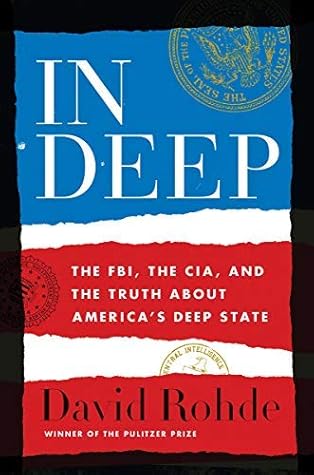More on this book
Kindle Notes & Highlights
by
David Rohde
Read between
May 22 - June 16, 2020
Baker, like Blee, immediately knew that Al Qaeda was behind the attack.
Bush had personally authorized a secret program, code-named “Stellar Wind,” that authorized the NSA to eavesdrop on calls between Al Qaeda members and individuals in the United States without the approval of the FISA Court.
The program went beyond any of the legal measures authorized by Congress in the PATRIOT Act. The FISA Court and Congress were not notified of the program’s existence. It was illegal, unconstitutional, and, in hindsight, unnecessary.
Baker protested to Attorney General Ashcroft, who initially ordered him in writing to keep the program secret from the FISA Court judges.
Ashcroft, Comey, Baker, and FBI Director Robert Mueller all said the program violated the law. Bush backed down and modified the program. A year later, the New York Times broke the story that the administration had been secretly surveilling Americans since 2001 without warrants.
Bill Barr, the former attorney general, supported Cheney and Addington’s effort to increase executive branch power. In op-eds and in congressional hearings after 9/11, he spoke in favor of military tribunals, the PATRIOT Act, and sweeping surveillance. “Unfortunately, in the wake of Watergate and the Vietnam War, and prompted by several sensational instances of abuse, our country embarked on a thirty-year campaign to curtail the powers of our security agencies,” Barr testified to Congress.
Barr criticized the FISA Court and said the president and the executive branch agencies alone should be allowed to conduct surveillance as they pleased without the approval of a judge.
“Numerous statutes were passed, such as FISA, that purported to supplant Presidential discretion with Congressionally crafted schemes whereby judges became the arbiter of national security decisions,” Barr said. “I believe that many of the statutes enacted in this period were too restrictive and posed significant problems for effective counterterrorism efforts.”
Barr also paid the tuition of eighteen students a year at a parochial school in New York.
“It is no accident that the homosexual movement, at one or two percent of the population, gets treated with such solicitude, while the Catholic population, which is over a quarter of the country, is given the back of the hand.”
affair, a Senate committee subpoenaed documents, and Clinton’s team claimed that they were protected by lawyer-client privilege. Barr called the rationale “preposterous,” and later complained that Clinton had diminished his office: “I’ve been upset that a lot of the prerogatives of the presidency have been sacrificed for the personal interests of this particular president.”
As GTE’s general counsel, he persuaded regulators to approve mergers that benefited his employer while arguing against those that benefited rivals.
Less than two years after a massive intelligence failure stymied efforts to prevent 9/11, a second historic intelligence failure helped facilitate the US invasion of Iraq.
In 2003, agency analysts concluded that Saddam Hussein possessed weapons of mass destruction (WMD), providing the Bush administration with a core justification for the invasion of Iraq. Skeptics of the war insisted that the administration, led by Vice President Cheney, had placed political pressure on the CIA to produce the intelligence findings the White House wanted.
attended dozens of meetings where analysts and policymakers debated whether or not Saddam Hussein had nuclear, chemical, and biological weapons. Dempsey said it was clear that some intelligence analysts believed that certain White House
officials, such as Cheney and Addington, supported an invasion of Iraq.
“They were largely a group of people who were trying to do their jobs,” she said. “It wasn’t a conspiracy to doctor intelligence.” She added, “we were leaning far forward and we fell.”
James Clapper, the Air Force intelligence officer who had feared congressional oversight in the 1970s, was also one of the senior intelligence officials who had failed on Iraq. Two days after the 9/11 attacks, Clapper was named director of the National Imagery and Mapping Agency, the organization that controls the intelligence community’s spy satellites. In the lead-up to the Iraq invasion, Clapper’s agency identified a group of trucks in Iraq as “mobile production facilities for biological agents.”
American inspectors found out that the trucks were used to pasteuriz...
This highlight has been truncated due to consecutive passage length restrictions.
The mistake, Clapper said, resulted from the compartmentalization of information. The identity of a key human source—an Iraqi defector known as “Curveball” who liv...
This highlight has been truncated due to consecutive passage length restrictions.
The defector, a chemical engineer named Rafid Ahmed Alwan al-Janabi, had claimed that Hussein constructed mobile biological weapons laboratories on trucks. It was later revealed that he had fabricated that information in the hopes of remaining in Germany. “I’d never thought to question the CIA’s ‘spooky source’ that had given us all that amazing—too amazing—intelligence,” Clapper recalled in his memoir. He said the fault could be found with “administration members who were pushing a narrative of a rogue WM...
This highlight has been truncated due to consecutive passage length restrictions.


